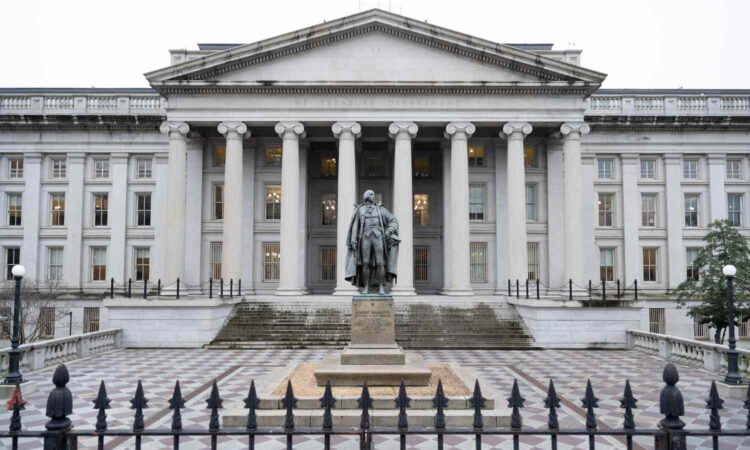
Key Takeaways
- The market for U.S. Treasurys has shed almost a quarter of its value since Treasury yields bottomed out in the summer of 2020.
- It’s the biggest Treasury bond bear market in history, surpassing two similar periods in the 19th century, according to a Bank of America research note.
- Exchange-traded funds (ETFs) exposed to U.S. Treasurys, like the iShares 20+ Year Treasury Bond ETF, have been pummeled in recent years.
We may be in the biggest bear market for U.S. Treasury bonds of all time, analysts at Bank of America wrote in a research note Friday.
The market for U.S. Treasurys has shed almost a quarter (24.7%) of its value since Treasury yields bottomed out in the summer of 2020. That’s the biggest percentage decline in U.S. bond market history, and is already six percentage points greater than the next-biggest rout.
You’d have to go back all the way to the 19th century to see comparable declines. One of those bear markets occurred in 1860, just before the outbreak of the Civil War, when prices fell 18.7% from peak to trough. Another occurred in the late 1830s, when prices fell 16% during the tail end of the Jackson presidency and the Panic of 1837.
The biggest bond market rout in U.S. history comes after one of its longest bull runs ever. In the four decades leading up to 2020, an extended period of falling interest rates after the stagflation of the 1970s and early 1980s led to steady returns for government bonds. Valuations peaked in 2020 amid record low interest rates.
Yields on benchmark 10-year U.S. Treasurys have soared since early last year, when the Federal Reserve began hiking interest rates in an effort to combat the highest inflation in more than four decades.
Rising borrowing costs have pushed the 10-year Treasury yield to a 16-year high of 4.8%. That’s up from a record low of 0.5% in the summer of 2020, when the Fed slashed interest rates to near zero to stimulate an economy battered by pandemic lockdowns.
Bond yields and prices move in opposite directions. When interest rates rise, like they have since early last year, existing bonds that offer a lower fixed yield become less attractive to investors. To compensate for the lower yield, prices on these bonds are lowered to entice investors to purchase them.
Treasury ETFs Have Been Pummeled
Some of the biggest bond market ETFs that track the price of Treasury bonds have been pummeled amid surging yields, with those exposed to longer-duration Treasurys recording the steepest losses.
The iShares 20+ Year Treasury Bond ETF (TLT), which invests exclusively in the longest-dated Treasurys, has shed roughly half its value since August 2020, as losses on the 30-Year Treasury bond hit 50%. The iShares 7-10 Year Treasury Bond ETF (IEF), which invests in medium-duration Treasury notes, has lost more than a quarter.
TradingView





